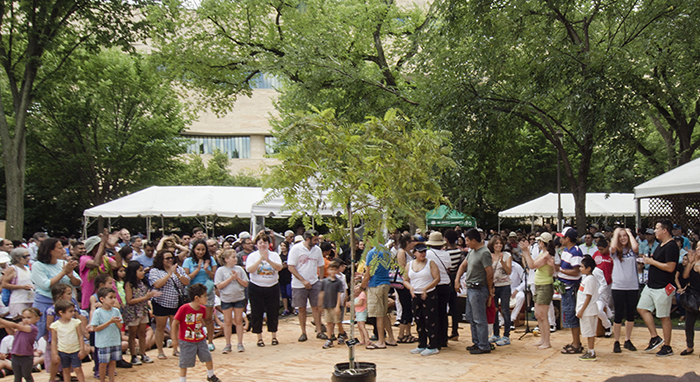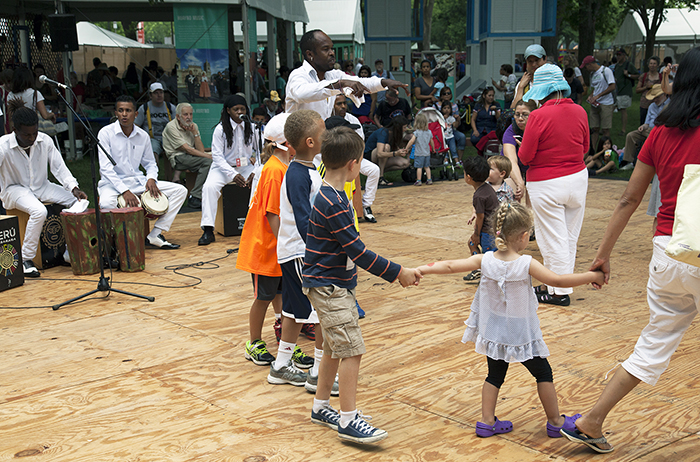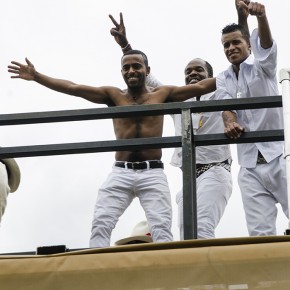Ring Around the Yunsa Tree: The Harvest Dance of El Carmen

Every other day, two Folklife Festival volunteers grab a small potted tree from the Wachiperi Communities tent and rush it over to La Plaza. Placed in the center of the dance floor, it becomes the axis of a joyous dance from the Peruvian town of El Carmen known as the yunsa. The Ballumbrosio family and other members of the Afro-Peruvian group Tutuma invite visitors to join in this celebration as they provide the soundtrack: guitars, various percussion, a rattling quijada donkey jawbone, and infectious group vocals.
Dancer, singer, and percussionist Miguel Ballumbrosio began learning about the yunsa as a young boy. The tradition is passed on orally through his community, and now he passes it onto us.
Can you describe the yunsa celebration?
It’s a tradition that unites two cultures: the Andean and the African. It is popularly known as the yunsa, which really means a change in time, but traditionally it’s called the corta montes, “wild grass cutter.” It’s called corta montes because it signifies the new harvest. It’s a tradition of the campesinos—people who live outside the city in rural areas.
The dance is done in pairs, circling around the yunsa tree, a special tree that is cut and planted in different places around the town. The tree is decorated like a Christmas tree, with lots of gifts. When a couple goes into the middle of the circle, first they dance to show off their skills, and then they try to cut down the tree. Each person gives five blows with an axe. When the tree finally falls, the couple who cuts it down is in charge of organizing the yunsa dance the next year. Cutting down the tree symbolizes a new birth, a new harvest, a new plantation, a new beginning.
To this day, the dance has not changed—very little. The tradition remains.

Does the tradition change when you perform it at the Folklife Festival? Is it still as meaningful?
Yes! Even though we don’t cut the tree, it has the same meaning because we are transmitting our culture. The most interesting thing is that we improvise the verses—they are not strict lyrics that we follow. Words can always change, and that’s how it is in the town too.
The refrain “guanchi gualito, guanchi gualón“ means “to love you, only me.” In between this, three singers improvise with satirical verses. For example, they could say, “I don’t sing like before, because before my chest would sing like a bird, because the people of Washington hurt me. They speak from the heart, they speak very emotionally.” Things like that, very personal things, but they’re expressed almost like a parody.

Have you learned anything new about Peru at the Festival?
I knew about most of the groups, but I didn’t know about the Q’eswachaka Bridge. The bridge has been an exceptional experience because it’s the first time I’ve seen it. What gives me the most pleasure is that I’ve participated in the building and formed a community with them. We’re so happy to continue discovering all the cultural richness in Peru.
Miguel Ballumbrosio and the Afro-Peruvian group Tutuma will perform the yunsa celebration one final time at the Folklife Festival, Sunday at 2 p.m. at La Plaza.
Elisa Hough is the editor for the Center for Folklife and Cultural Heritage. This interview was translated from Spanish by Peru program intern Elena Baker.

